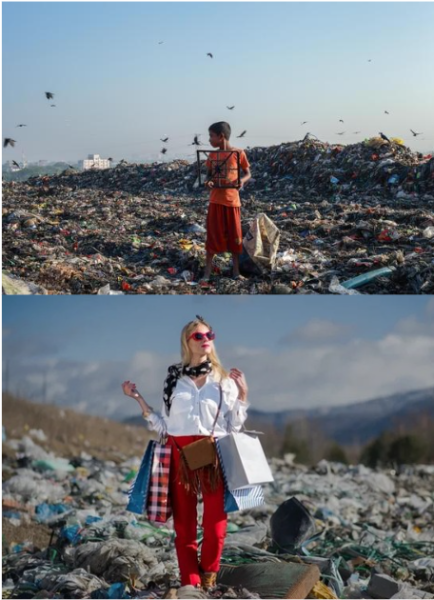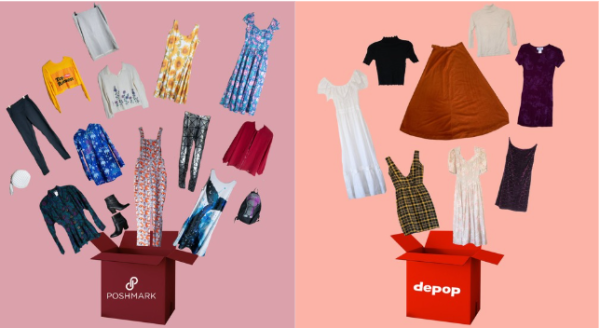“I thrifted it” is a phrase that has altered the fashion industry since the late 2000s. Online thrifting through apps such as Depop, Poshmark, The RealReal, and Etsy have Generation Z (Gen Z) hooked on this shopping trend. Also known as secondhand shopping, members of Gen Z account for over 40 percent of consumers and have made thrifting a $28 billion industry, according to npr.org. By 2028, the worldwide secondhand market expects to reach an estimated value of $350 billion, proving the shift toward more sustainable fashion among younger generations, according to thredup.com. Not only is thrifting a way to decrease the impact of consumerism, but it is also a form of expression for teens who are looking for unique or vintage pieces. Society must turn to recycling clothing rather than disposing of it, which makes it imperative to educate teens on the environmental importance of thrifting.

Although purchasing new clothes is enjoyable and exciting, new secondhand market trends in the fashion industry could not have come at a better time for the environment, according to teenvogue.com. Production in the fashion industry makes up for over 10 percent of carbon emissions. Nearly 85 percent of textiles go to dumps or landfills, ultimately polluting rivers and exhausting the earth’s water sources, according to earth.org. To put things into perspective, for every 100 billion items of clothing produced, 92 billion end up in landfills. However, just 12 percent out of the 85 percent of material used for clothing ends up recycled and reused, according to earth.org. If every consumer bought at least one garment through thrifting instead of a newly produced one, carbon dioxide emissions would decrease by more than two billion pounds, according to retaildive.com. The processes of recycling and repurposing clothing reduces waste and excess water. Hence, online thrifting markets lead the way to sustainable, eco-friendly fashion consumption and serves as a possible solution for excessive waste.
Social media plays a pivotal role in the increase of thrifting by shaping fashion trends and sparking visibility and interest among younger generations. In the past decade, thrifting among teens has increased faster than any other age group. Developers often design thrifting apps similar to social media platforms, in which users open up accounts, start a following, and follow others. 90 percent of Depop users are under the age of 26, signaling a trend among younger generations.

Thrifting trends usually begin on social media apps when highly followed influencers sell their items on Depop or post online thrift hauls, creating new trends that teens are intrigued to follow while also promoting sustainable fashion, according to npr.org. Social media platforms have encouraged teens to embrace discounted and vintage clothes while simultaneously creating a more environmentally friendly shopping trend. Ms. Dayna Isom Johnson, an Etsy trend expert, shared recent highlights and marketplace insights regarding Etsy’s recent trends. She commented on the creative expression teens get to explore through thrifting, as well as its benefits for the planet, according to teenvogue.com.
“In an age of social media sharing, millennial and Gen Z shoppers are increasingly looking to stand out from the crowd,” Ms. Johnson said, according to teenvogue.com. “Vintage is a surefire way to find that one-of-a-kind piece that no one else will have while also shopping sustainably by giving an existing product a new life.”
As younger generations continue to influence consumer habits, it is clear that secondhand shopping is becoming mainstream among Gen Z. For today’s teens, it is not just about saving money or being environmentally conscious but shopping sustainably while also embracing unique pieces. As teens become more educated on the importance of thrifting, society can learn from them and think more about recycling clothing rather than disposing of it. Ultimately, communities worldwide must acknowledge the effects of overconsumption in the fashion industry for the sake of the environment.
Featured Image by Lilia Newman ’27




